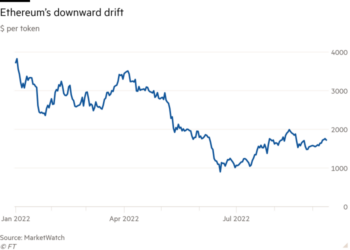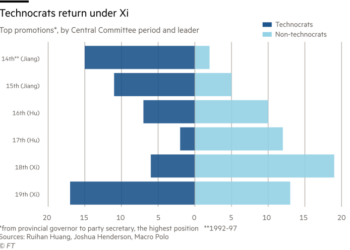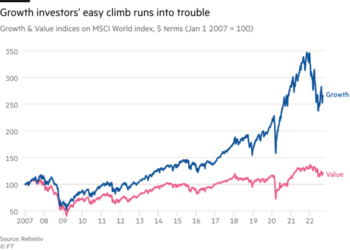Leonardo Del Vecchio, billionaire founder of the world’s largest eyewear group Luxottica, who died this week at 87, was an entrepreneur who spoke his mind. “It would embarrass me, going around with that on my face,” he once confessed to the FT about Google Glass, the ill-fated augmented reality spectacles.
Luxottica was developing the device with Google and claimed he had been joking, but to little avail. Del Vecchio, whose company later went through a €50bn merger to form the even more powerful EssilorLuxottica, had identified the wearable’s fatal weakness: it looked ridiculous.
I recalled this after donning a Meta Quest 2 virtual reality headset to view a student project at the Royal College of Art this week. It took me into the virtual interior of a ruined church, and as I walked around, I gazed up from the nave and saw a virtual sky, rendered with Epic Games software.
It was impressively immersive, but also rather awkward. The headset blanked out the world for the metaverse, and I bumped into someone standing physically but invisibly in my path. Removing the goggles and retrieving my glasses, I felt as sheepish as Del Vecchio had predicted.
EssilorLuxottica has since dabbled further with smart spectacles through its brand Ray-Ban. It joined Facebook’s owner Meta last year in launching Ray-Ban Stories, pairs of glasses with cameras and audio in their frames, which are reminiscent of Snap’s Spectacles. No amount of ridicule can dissuade US technology companies from searching for the next big device.
Meta and Apple have been investing heavily in creating mixed virtual and augmented reality headsets that can overlay data and images on a wearer’s view of the world, and may launch products later this year. Apple plans to embed AR technology into glasses that look more like the real thing.
But I wonder how convinced Del Vecchio really was by these visions of the future for an industry he knew better than anyone, having founded Luxottica in 1961 as a spectacle frame supplier in the Dolomites. He did not progress from being raised in an orphanage to becoming one of Italy’s richest people without knowing what customers want.
Del Vecchio’s first insight was that eyewear was ripe for transformation from a medical device into a fashion accessory. He struck a deal with Giorgio Armani in 1988 to license its brand, and the company now has 20 licensed brands, including Prada, Coach and Versace. It also owns Ray-Ban and Oakley, the US sports eyewear brand.
It was an astute move, because it tied fashion to a cycle of updates: many people have to change prescription annually and why not buy fresh frames at the same time? It can be fearsomely expensive, leading to the rise of discounters and direct-to-consumer start-ups, but Del Vecchio had an answer to that, buying the Lenscrafters chain in 1995.
When he finally diversified from making frames, he did not place a speculative bet on visual technology, but merged in 2017 with Essilor, the French prescription lens group. Lens makers are not fashion brands — I only discovered that my varifocals were made by Hoya of Japan when I checked this week — but the science of seeing is a steady and growing business.
Companies such as Maui Jim, founded in Hawaii in 1987 to make sunglasses with patented Polarised lenses that block Pacific glare and ultraviolet light, are at the high end. Maui Jim shades retail for an average of $250 to $300 and the company was acquired in March by Kering, owner of luxury brands that include Gucci and Saint Laurent.
In the mass market, there is no shortage of potential customers among the world’s emerging middle class: EssilorLuxottica emphasises to investors that 2.6bn globally suffer from untreated vision problems. There are now lenses to slow the progression of childhood myopia, as well as to filter blue light from computer and phone screens.
Most of this technology is invisible: we look through it all day long without noticing. Yet it fits easily into fashion frames, and does not require battery power to work. It will take a long time before Apple, Meta and others can produce AR glasses that are equally light and comfortable.
Then there is the question of whether we really need AR glasses. It is not obvious how useful they will be, albeit few people grasped the scope of the iPhone when it was launched 15 years ago. Like heads-up displays in fighter jets and cars, they may give us directions, but having messages and emojis constantly flashing before one’s eyes sounds like a notification-on nightmare.
The late Steve Jobs once referred to Apple TV as a “hobby” rather than a profitable venture akin to the iPhone, and that feels like EssilorLuxottica’s current approach to augmented reality. Glasses date back to 13th-century Italy but the technology is not yet mature: there is plenty of potential left.
When AR glasses beat the ones we rest on our noses in both form and function, the world of eyewear will be transformed again. Until then, remember Del Vecchio’s intuition.











